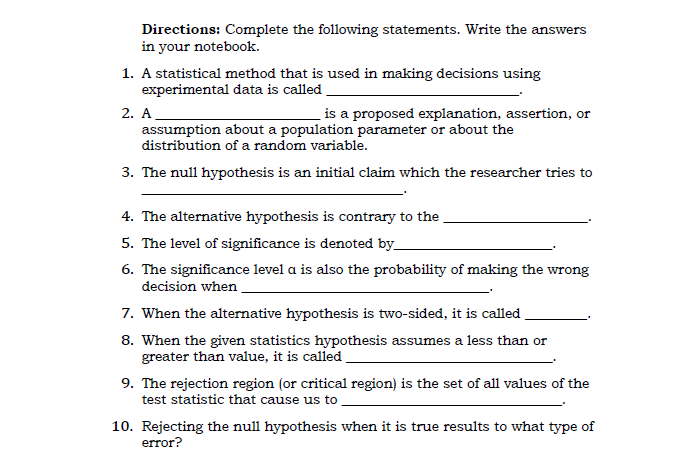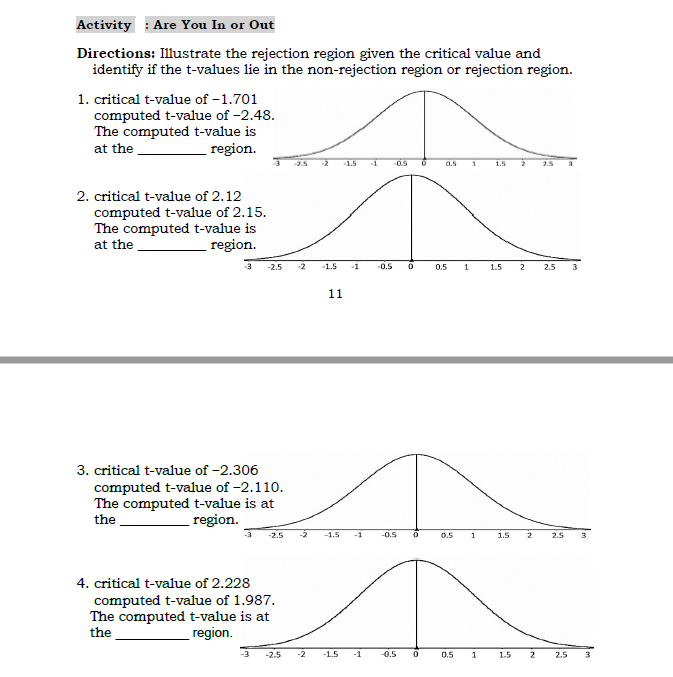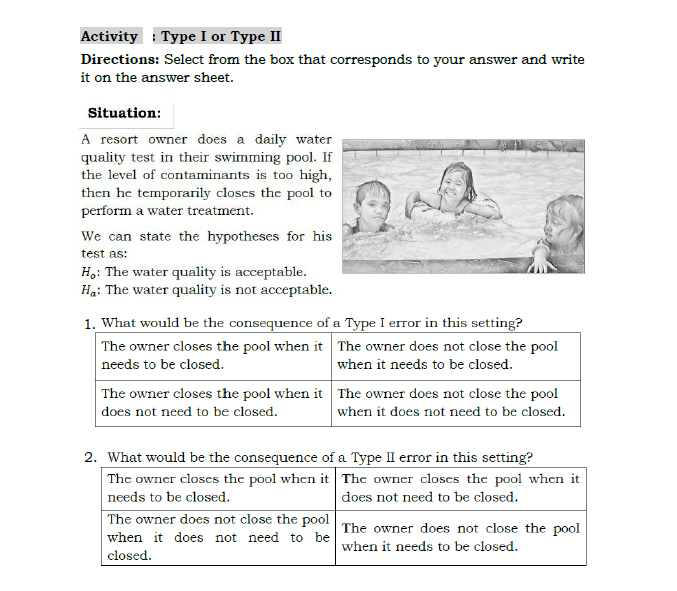Help me to answer all the following below, Statistics and Probability Tutorsss
Directions: Complete the following statements. Write the answers in your notebook. 1. A statistical method that is used in making decisions using experimental data is called 2. A is a proposed explanation, assertion, or assumption about a population parameter or about the distribution of a random variable. 3. The null hypothesis is an initial claim which the researcher tries to 4. The alternative hypothesis is contrary to the 5. The level of significance is denoted by 6. The significance level a is also the probability of making the wrong decision when 7. When the alternative hypothesis is two-sided, it is called 8. When the given statistics hypothesis assumes a less than or greater than value, it is called 9. The rejection region (or critical region) is the set of all values of the test statistic that cause us to 10. Rejecting the null hypothesis when it is true results to what type of error?Activity :Aru'funlnorlt Directions: Illustrate the rejection region given the critical 1value and identify if the tvalues Lie in the nonrejection region or rejection region. 1. critical tvalue of1.'Fl'.}l computed tvalue of 2.48. The computed tvalue is at the region. 2. critical tvalue of 2. l2 computed tvalue of 2.15. The computed tvalue is at the region. .3 .25 .1 -L5 .1 .11.! a 11.5 1 1.5 2 2.5 3 11 3. critical tvalue of 2.3- computed tvalue of 2. 1 10. The computed tvalue is at the region. .3 .25 .1 .15 .1 415 u 0.5. 1 1.5 2 15 3 4. critical tvalue of 2.223 computed tvalue of 1.98? The computed tvalue is at the region. Activity : Type I or Type II Directions: Select from the box that corresponds to your answer and write it on the answer sheet. Situation: A resort owner does a daily water quality test in their swimming pool. If the level of contaminants is too high, then he temporarily closes the pool to perform a water treatment. We can state the hypotheses for his test as: Ho: The water quality is acceptable. Ha: The water quality is not acceptable. 1. What would be the consequence of a Type I error in this setting? The owner closes the pool when it The owner does not close the pool needs to be closed. when it needs to be closed. The owner closes the pool when it The owner does not close the pool does not need to be closed. when it does not need to be closed. 2. What would be the consequence of a Type II error in this setting? The owner closes the pool when it The owner closes the pool when it needs to be closed. does not need to be closed. The owner does not close the pool when it does not need to be The owner does not close the pool closed. when it needs to be closed









